A Reference Flagship on a Budget!
PROS: neutral revealing signature, dual ES9028Pro DACs, DSD512 support, Android 6.0/WiFi/Bluetooth, 2GB of RAM, 6Vrms (BAL) / 3Vrms (SE) outputs, leather case.
CONS: single microSD and 64GB of internal storage, battery life due to high power AMP module, fw is almost there.
The product was provided to me free of charge for the review purpose in exchange for my honest opinion.
Manufacturer website: iBasso, for sale on Amazon.
Intro.
What is the first thing that goes through your mind when you hear a DAP being labeled as a Reference? I have a feeling many audiophiles will envision a cold sterile uninspiring sound, used as a reference for a comparison to other sources How about referring to a DAP as a Flagship, does it make your wallet cringe in fear of $2k-$3k price tag? Who knows, but my feeling is that some manufacturers inflate their prices, regardless if it’s a headphone or a DAP, just because flagship products should have a flagship price tag. In my opinion, iBasso is going to shatter many of these inflated cold stereotypes with their 10-year anniversary release of a new Reference Flagship DAP – DX200. Despite a high cost of its premium components, they still managed to list it at a very reasonable price, and its neutral revealing sound signature quickly elevated it to a reference level in my book.
Of course, you can’t start talking about DX200 without mentioning iBasso DX100 and its HDP-R10 twin (special edition Japanese version of DX100) which had a truly forward thinking design back when it was introduced 5 years ago. Today, when many DAPs lose their momentum and become irrelevant a year after the release, it’s fascinating that people still ask me to compare DX100 to new products I review. I don’t have DX100 and not familiar with DX90, but ever since reviewing DX80 DAP and IT03 3way hybrid monitors, I formed a solid opinion about iBasso as a company which pays close attention not only to details of the sound tuning and ergonomics of the design but also selection of quality materials and components. DX200 release is not an exception, and here is what I found after spending the last month testing this DAP.
Unboxing.
iBasso put a lot of thought into the packaging design, making sure it has a flagship appeal from the moment you get it in your hands. From a soft-touch exterior sleeve and storage box to a peculiar diagonal split opening, right away you can sense that you’re dealing with a premium product. Unlike majority of other packaging boxes where you have a foam cutout tray protecting the DAP from sliding around, iBasso came up with an interesting idea where DX200 was placed on an open “tray” surrounded by a cool sketch drawing describing ports and controls, while the surrounding foam was glued inside of split halves of the box. DX200 is still secure and protected inside, and then becomes a centerpiece of the presentation without a need to take it out after you slide the box open.
As a matter of fact, I usually prefer to take my review pictures with a DAP out of the box, while here I kept it on a “display” tray because it looked cool with all these sketch lines around it – a nice setting for detailed pictures. Once I removed the tray, underneath I found boxes with a leather case and cable accessories, each one labeled and with a little tab to assist in removing them out.
Accessories.
We all come to expect a screen protector, a charging cable, and a manual, and you will find all of this here included with DX200. When it comes to a power/charging cable, iBasso took a step further, featuring a premium build USB to USB-C cable with a flexible braided nylon jacket and a solid quality metal connectors. I know, it’s just a cable, but I still find it to be a nice touch to include a quality upgrade cable, especially since we are dealing with a less common USB-C.
Another included cable was a short thick coax interconnect, a solid construction design with a perfect length for a portable external DAC/amp connection. I wouldn’t mind seeing a short optical digital cable included as well, but you can find these on-line for under $20. If you have a need to use DX200 as an external transport and you want an improved quality sound, I always find optical connection to yield better results when comparing to electrical cable.
Also, included was a burn-in cable which is only intended for the initial “break in” period. Many manufacturers recommend a burn in period of 200hrs to break in electrical components (such as caps). You can go through burn in by listening with your headphones, or you can take a shortcut by attaching this cable with a built-in load which simulates your transducer. I find it very convenient because you can set DX200 on repeat for a week and crank up the volume (up to the max 150 steps) without worrying about blowing your headphone drivers or distracting others with a loud music. DX80 featured a similar cable with 3.5mm TRS single ended connection, while DX200 burn in cable comes with 2.5mm TRRS balanced connection. Per iBasso, connecting balanced output will exercise most of the circuit components since they are shared between SE and BAL outputs.
One thing to keep in mind, you will not get an accurate total battery life reading while using burn-in cable since it drains battery faster in comparison to a regular headphone use. If you want to test DX200 battery endurance, use headphones at a regular listening level.
Last, but not least, is the leather case included with DX200. This DAP is not exactly compact or featherlight, and you can feel the heft of all metal solid construction in your hand. I would personally recommend to use the case to enhance the grip and to protect both the DAP and the surface you place it on from scratches. The case has a generous port opening at the bottom for your headphones and LO, covered micro-SD slot on the left to keep the dust away (need to remove the case to replace the card), a complete cutout around the transport controls and volume wheel on the right side, and full opening at the top for digital out, USB-C, and power button. The snap button in the upper right corner keeps DX200 “locked” inside, and the back panel with an imprinted company name and logo has extra cushioning to absorb the shock if you drop it.
Without a doubt, it was great to include a quality case with stock accessories, and it should do a good job enhancing the grip and providing some level of protection if you drop it. But to be honest, I wasn’t too crazy about it. Maybe it’s just because I’m spoiled by Dignis cases which I use with majority of DAPs. Perhaps cutting some bulk on the back to slim it down and trimming the right front side since it covers part of the volume wheel would be an improvement. For sure it’s not a showstopper, and I hope that maybe we will see a premium upgrade from Dignis or someone else in a near future.
Design.
When DX200 was first announced, iBasso presented 3 different choices and let their fans decide the winning design. Despite a few choices with exotic body lines, majority of people agreed on a standard clean rectangular shape with a volume wheel surrounded by a protection bar with embedded power and hardware control buttons. As much as we enjoy the looks of non-traditional exotic designs, at the end of a day many prefer a more practical and comfortable shape that is easy to hold in your hand and to carry in your pocket. But at the same time, having the analog volume wheel with hw buttons next to it clearly sets the design apart from a typical boring smartphone look.
The focus of the front of DX200 is 4.2″ IPS high resolution (768×1280) display which utilizes Mitsubishi optical glass with OCA-bonded touch screen. The display is raised on a beveled pedestal, while the included leather case protects and keeps it away from the surface even if you place DX200 face-down. With dimensions of 128.5mm x 69mm x 19.5mm and the weight of approximately 240g, this high precision CNC engraved aircraft aluminum DAP feels very solid in your hand, though it’s a bit on a large and thicker side, especially with extra back padding of the leather case. The only plastic part of the exterior design is at the top on the back, a small ridged plate to make sure WiFi and Bluetooth antennas are not blocked by a metal shield.
The left side of the DAP in the upper corner has a slot for micro-SD card (up to 256GB), while the right side has a volume wheel along with Play/Pause and Skip Next/Prev buttons. The buttons are embedded into a guard bar which extends and goes around the volume wheel to protect it from accidental bumps. This bar extends around the corner to the top where it also hosts a power button (long press to turn the power on/off, short press for a display on/off), and 2 hex screws securing it to the body. At the top, you will find USB Type-C connector for charging, data transfer, and future usb-otg support. To the left of it, you will find SPDIF multi-port which supports both electric coax and optical connection.
The bottom of DX200 has Line Out port, 3.5mm TRS Single Ended HO, and 2.5mm TRRS Balanced HO, all part of a default AMP1 module. Amplifier module is removable and replaceable where iBasso promises more modules in the future. Personally, I’m hoping for an amp module with the same number of ports and a reduced power for IEM use to extend the battery life. If you think about it, by default AMP1 has a very impressive spec even for many demanding full size headphones, which are not always practical for a portable use. But for IEMs which don’t require too much juice, lowering the output power will do the trick of extending battery life which is always welcome for a portable use.
The removable amp module slides in at the bottom of DX200 and stays behind the display, hidden from the front (the joint seam is only visible from the back/sides) so it doesn’t add too much to the length of the unit. With two latches and a pair of screws on each side going into these latches, the module attachment was very secure.
Under the hood.
Price of the DAP is often a hot topic of discussion since in some cases it varies in thousands between different flagships. Of course, a company has every right to charge for the product as much as they want to. But regardless of MSRP price, every DAP has a bill of material (BOM) which is based on the cost of the components, and in case of DX200 it’s not cheap.
When iBasso announced to be the first to offer 2 high end desktop ES9028Pro (32bit 8ch) DACs, I automatically assumed DX200 will have a price closer to other flagships in $2k+ range. From what I heard, ES9028Pro is still too new and costs approximate 6x more than your typical AK4490, ES9018, or PCM1792 DACs. So using two of those, and adding on top of that two Femtosecond high precision oscillators from Accusilicone, 6-layer gold plated printed circuit board (PCB), handpicked low ESR capacitors, high precision resistors and ultra-low noise power regulators, XMOS XU208 usb receiver, ARM Cortex-A53 8-core 64bit CPU, 2GB of LPDDR3 RAM, 64GB eMMC internal storage, 4.2” IPS high res Mitsubishi optical glass, and CNC engraved aircraft aluminum body – have to add up to a high cost.
Common sense will tell you, higher cost means higher price. But Basso took a risk and decided to lower the MSRP price, similarly to what they did with IT03 3way hybrid IEMs. I guess it’s one of those examples where manufacturer makes a product more affordable to push higher volume of sales. But it takes more than just a reasonable price and an impressive spec to sell the product.
Besides the key components I already listed above, including dual pro series desktop quality ES9028Pro DAC (we’re talking about S/N ratio of 125dB from a balanced output), you also have a generous size 4400mAh 3.8V Li-Po battery (providing about 8hrs of playback time with mixed mp3/FLAC files – as tested by me), 5G WiFi, BT4.0 (no aptX). SPDIF output support of both coax and optical, and AMP1 module HO outputs supporting 2.5mm TRRS BAL with output voltage of 6Vrms (1.125W into 32ohm load) and 3.5mm TRS SE with output voltage of 3Vrms (281mW into 32ohm load). In terms of storage, it has a single micro-SD card (up to 256GB) and 64GB of internal flash memory. In my opinion, dual micro-SD and internal storage boosted to 128GB would have been more appropriate for a flagship release.
The powerful hardware makes it a breeze to support the latest Android 6.0 OS along with a smooth decoding and playback of majority of lossless and lossy files up to PCM 32bit/384kHz and DSD512, covering all the formats from APE, FLAC, WAV, WMA, AAC, ALAC, AIFF, OGG, MP3, DFF, DSF, DXD, including support for M3U playlists. I don’t even have DSD512 files for testing, though tested DSD256 without a single hiccup. And just like a playback of audio, I also enjoyed a smooth playback of video (great way to watch some movies).




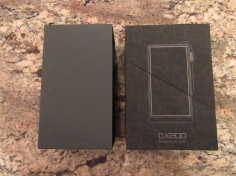



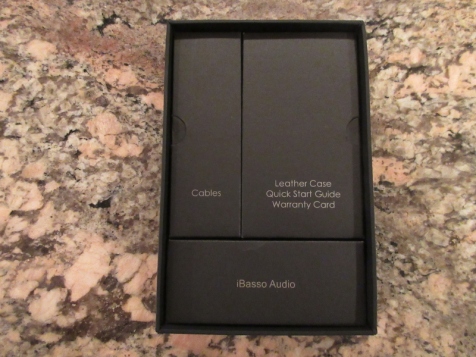










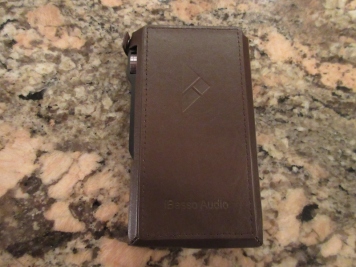

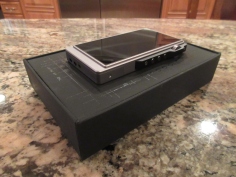









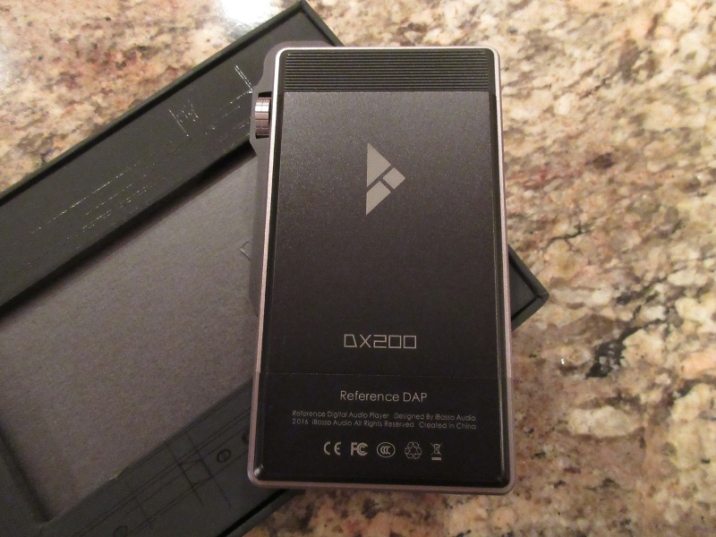

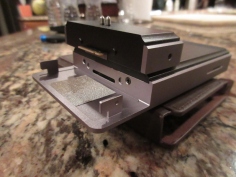


nice review, if only you equipped and compared with ak380 + wm1z then it would be perfect.
LikeLike
I don’t have either AK380 or WM1z, only auditioned them at CanJam NYC, so prefer not to include in comparison based on a short listening time. But I found 1Z and 380SS to be in Opus#2 territory, smoother and with more body. DX200 with its default amp is more analytical, closer to LPG.
LikeLike
Another great review! I need to stop reading your reviews because it’s draining my moolah!
Kidding aside, question, Since it’s also running on android (side loaded needed on playstore) can I assume that spotify and or apple music will run smoothly?
LikeLike
just replied to you on HF in PM. I’m not familiar with this app, but if you can’t side load it and need google play store, either wait for iBasso to add it or use the free rom per link on head-fi.
LikeLike
Got it! Thanks for your input mate!
LikeLike
Thanks for your very detail review >If one consider all the option and adds on in this player and the price it is the best valued Player on the market . My next Player for sure .
LikeLike
Excellent review! I am new to daps so the eq intrigues me, how well does this dap work with modifying eq?
LikeLike
it’s a standard paragraphic EQ, like in any other DAP, works ok. BUT, iBasso promised that in one of the upcoming FW updates they will include Parametric EQ (where you can adjust the frequency and the bandwidth of every band).
LikeLike
thank you for your review. i´m moving from a desktop rig to a definitive dap. i read about ibasso, fiio, etc..for review and specs seems to me that the ibasso dx200is a good choice. you confirm’
thank you
LikeLike
informative review, as always, Twister…kudos….have you since had a chance to compare it to the newly released opus #3?
LikeLike
if you read my Opus#3 review, in there I focused mostly on mid-tier rather than flagship DAP comparison. Opus#3 is great, but it’s somewhere between their lower level Opus#1 and higher end Opus#2. But I heard they just recently updated #3 fw with a noticeable improvement of tonality, more balanced. But in terms of technical performance, DX200 will have a more layered, more resolving sound with a higher output power. With a default amp1, DX200 is actually more analytical (though, again, the latest dx200 fw update added more “body” to the sound), but amp2 (if you read my review of amp2 as well) adds more body to the sound, and ibasso releasing now amp3 and amp4. So, DX200 is still quite fantastic for a flagship dap under $1k. and so does their IT03 hybrid, and apparently 4way IT04 upcoming hybrid going to be another killer!
LikeLike
Apologies no I didn’t see that review…I’ll have a look now…thank you
LikeLike
Mango lists album tracks alphabetically, not by track number. A horrible oversight by the dev! Nice player tho’. Using with Forrest Audio FLC8S.
LikeLike
You have to post this feedback on Head-fi in DX200 thread so that Paul can collect it for iBasso sw team 😉
LikeLike
Great review – thanks! Two quick questions: Is the battery user-replaceable? Currently have a DX80 and DX90. I like the DX90 for the slightly sharper sound and the removable battery. But I like the display on the DX80. Neither display is bright enough to use outdoors, where I do much of my listening. I’m hoping the DX200 is a bit brighter and has a replaceable battery.
LikeLike
Every 3 months there is a new dap, and there hasnt been one with a removable battery like the original old dx90. In dx200 battery is replaceable but not removable. Nobody in the last few years released a dap with removable battery, there is no consumer interest in it, i guess. Besides, i heard dx90 batteries were lasting 3-4hrs, so made sense to remove and replace it. All the new daps have 9-10hr batteries… Display is as good as a smartphone.
LikeLike
Thanks much! I put an aftermarket higher-capacity battery in my DX90 and get about 8 hours. My DX80 battery, just after the warranty expired, now only plays an hour so I have to figure out how I can get it replaced. First thing I ever couldn’t find a YouTube video for! Display on both the 80 and 90 are acceptable quality, but nowhere near bright enough to read outside. Keep up the good work – much appreciated.
LikeLike
Thank you for the review. Would you say that DX200 is a step up comparing to DX90, which I use currently? What the most noticeable differences in sound are (if you happen to listen to DX90)?
LikeLike
didn’t hear DX90, but it was ibasso mid-fi level DAP. iBasso true flagship was DX100. DX200 is an upgrade and a step up to their previous flagship (dx100). It’s not even in the same comparison category as dx90. DX200 goes head-to-head with other flagship daps that cost twice as much.
LikeLike
might be swapping out my mojo for this unit…i hear it steps things up SQ once you go balanced with this unit, esp the amp mod 2 or other.
LikeLike
yeah, balanced doubles the power and improves sound. amp2 doesn’t have balanced output, only single ended. Upcoming amp3 should be like amp2 with balanced.
LikeLike
Can you set me straight on balanced output? Conceptually sounds a lot like XLR microphones to me. But are there any headphones? Worthwhile to use a 2.5×3.5 adapter? Or is this primarily a replacement IEM cable tactic? I like the idea of double the output power, especially when sending output to a small amp or pre-amp, and I see there are plenty of 2.5mm to RCA cables available. Any guidance or background much appreciated.
LikeLike
Single ended (3.5mm TRS) has your Left and Right channels referenced to the same common ground, while balanced (2.5mm TRRS) has L/R channels separated, referencing “hot” signal to it’s “negative”. Without referencing to a noisy ground, you have a better SNR, blacker background, and truly differential opamp output which should double the voltage swing. I mean, that’s in theory, and unfortunately not many DAPs follow this theory in their design, implementing 2.5mm TRRS as a sale gimmick. iBasso does follow it to the core, a true differential balanced architecture which doubles the voltage, gives you better L/R channel separation, and improves SNR. Some of these changes could be perceived as subtle to our ears, depending on our own hearing sensitivity, but that’s a whole different story 😉
LikeLike
Great explanation on the 2.5 connection – thanks. The answer to the second part of my question is no, it doesn’t make sense to use a 2.5×3.5 adapter as that just gets you back into the same tied-to-noisy-common-ground boat.
But I’m not quite there yet on the third part of my question: What can plug into a 2.5? The only headphones a search brings up are office type with built-in microphones, and of course tons of PlayStation2 gear.
Seems to me if you have a good quality pre-amp with truly isolated l/r inputs, the 2.5xRCA adapter is well suited. The concept completely clicks with me, but where are the headphones? IEMs?
LikeLike
As long as your headphones have a removable cable going to L/R earpiece or cup, all you need is a balanced terminated cable with 4 separate conductors, 2 wires per each side.
LikeLike
FYI – found this tutorial on balanced cables: https://robrobinette.com/BalancedCable.htm
He offers a great explanation with schematics on balanced vs. unbalanced, in addition to the balanced cable guide.
Think the DX200 will has enough power to drive any of these?
HE400 or 500; HD580, HD600, or HD650?
Not too tough to make a balanced cable for them…
LikeLike
Don’t have those full size cans, but dx200 balanced output has over a watt of output power. So you should be good.
LikeLike
what are your favorite common-man-price IEMs that would pair nice with the DX200 and be easy to convert to balanced?
LikeLike
Most iems I’m listening to are in $2k price bracket. Common man price iems, iBasso own it03 hybrid which comes with mmcx removable cable and they have their own high end cb12 8 conductor balanced cable (extra purchase).
LikeLike
Hey twist, have you heard of sony nw-wm1a? If yes, How is this compared to dx200? I got the chance to demo the nw-wm1z and it was awesome but still can’t compare since there was no demo unit of dx200 nor nw-wm1a but was told that both by sony that nw-wm1a and nw-wm1z have the same sound signature.
I was impressed with the walkman’s built and sound signature. I just want to know if dx200 is still better than the walkman.
LikeLike
Sorry, didn’t try wm1a, and only tried wm1z briefly 6 months ago, don’t even remember how it sounds. Heard from a few people whose opinion I trust that 1z sound improvement is quite noticeable when compared to 1a.
LikeLike
Same…but 1z’s price is a huge price jump compared to dx200 and no way I’ll purchase it anyways… have you heard of kann by ak?
Thanks twister!
LikeLike
Not familiar with KANN either. Heard it’s powerfull but only mid fi sound quality. If i go by a distant memory, dx200 with amp2 kind of reminds me of 1z sound. Full, rich, and yet still resolving.
LikeLike
So up to date, do you think dx200 is still “up there” with all the new releases? Is this still one of your favorite? If this comes close to z1 then I’m sold 🙂 though, i need to get amp2 for upgrade.
LikeLike
Dx200, Plenue 2, and LPG are my favorites now.
LikeLike
Hi
Thanks for your review. I’m really enjoying my DX200 (Amp2), IT03 (Stock cable) combination. If I wanted to get an IEM for around £1000, that had a similar signature to the IT03, what would you shortlist?
Also, is there any good reason to change to the Plenue 2?
Thanks in advance.
Regards
Darren
LikeLike
No need to switch to P2. Hmm, similar to it03, lately i have been playing with 64audio limited edition U4SE, see if you can find it. Very impressive!
LikeLike
Thanks for your answer. I think I will wait until the IT04 is out and reviewed with the DX200 before I make a decision. I could also get an AMP3 and CB13 cable for my IT03’s.
LikeLike
Can you please provide comparison between dx200, Plenue R and Fiio X7II for SQ, battery life and power?
LikeLike
PR gonna win in battery, hands down, dx200 and x7ii will be similar in battery, and can’t match PR. Power – PR is the weakest, designed more for IEMs, X7ii with its AM3A module is good, but DX200 with its AMP3/AMP4/AMP5 high power amps wins! Sound quality, DX200 is above X7ii (I compared it already, look up that review on my blog). PR is a step below in quality when compared to dx200/x7ii.
LikeLike
Crees que cómo facilitador amplificador es mejor que el chord mojo en cuanto a calidad de sonido
Me sería de gran ayuda ya que no sé si comprar el chord o ibasso
LikeLike
in English, please 🙂
LikeLike
He’s trying to figure out whether to buy an amp module or the Chord Mojo and would like to know if you have a comparison or opinion…
LikeLike
Oh, thanks 🙂 Was looking from my laptop, no translator here 🙂 Don’t have experience with Mojo, but heard it’s on a smoother side. So, default AMP1 with DX200 which is very revealing and analytical will be far from Mojo sound sig. And, then, you can get AMP5 which is warmer and smoother, maybe closer to Mojo? So, it will be a better $200 upgrade than buying a new DAC/amp (Mojo). The flexibility of DX200 modular design is a BIG Plus!
LikeLike
Hi,
Thanks for excellent review. I am planning to invest on DX 200 or Opus 2 . As IEM I have three candidates: earphonics SEM 9 or U12T or Tia trio. I am coming from D90 and velvet v1. I prefer a neutral analytical sound with a broad sound stage. Having reviewed all which combination would you recommend? Unfortunately I do not have chance to try them in my county.
LikeLike
DX200 with a default amp1 and U12t with M15 apex module would be the most neutral revealing combo above.
LikeLike
My good man… Can I pick your brain?
I’m wreaking my head, looking for a device to drive my active monitors.
* Runs locally stored files
* Streams SoundCloud
* Controlled remotely via an Android device
” Outputs either SPDIF coax or AES.
The DX150 and DX200 meet all those requirements. Still, is there any other alternative? SQ is top on my mind.
Many thanks!
LikeLike
Hiby R6 is your other option, great DAP, the only Cons is 10 ohm output impedance which is “fixed” with iFi iEMatch impedance adapter.
LikeLike
The HiBy seems to meet requirements with aplomb.
Thanks for the useful tip.
If you have the patience and knowledge, answer me this: Will sending the SPDIF signal for re-clocking improve the sound? (e.g., to Mutec MC+3 and from there AES into my monitors).
LikeLike
Sound improvement is very subjective because in this case you are comparing dac/amp internal to R6 vs dac/amp of your external desktop setup or whatever you are using. In theory desktop setup should be better due to better power filtering, less noise, more output power, but then it also becomes subjective depending on pair up synergy with your headphones. I’m personally happy with my portable DAP setups 😉
LikeLike
I recently picked up a DX200 and wondered which of the following amp modules in your opinion would pair best with the Andros: Amp 1, Amp 4s or Amp 8? Thanks!
LikeLike
amp1 is bright, 4s looses resolution due to warmth, so go with amp8
LikeLike